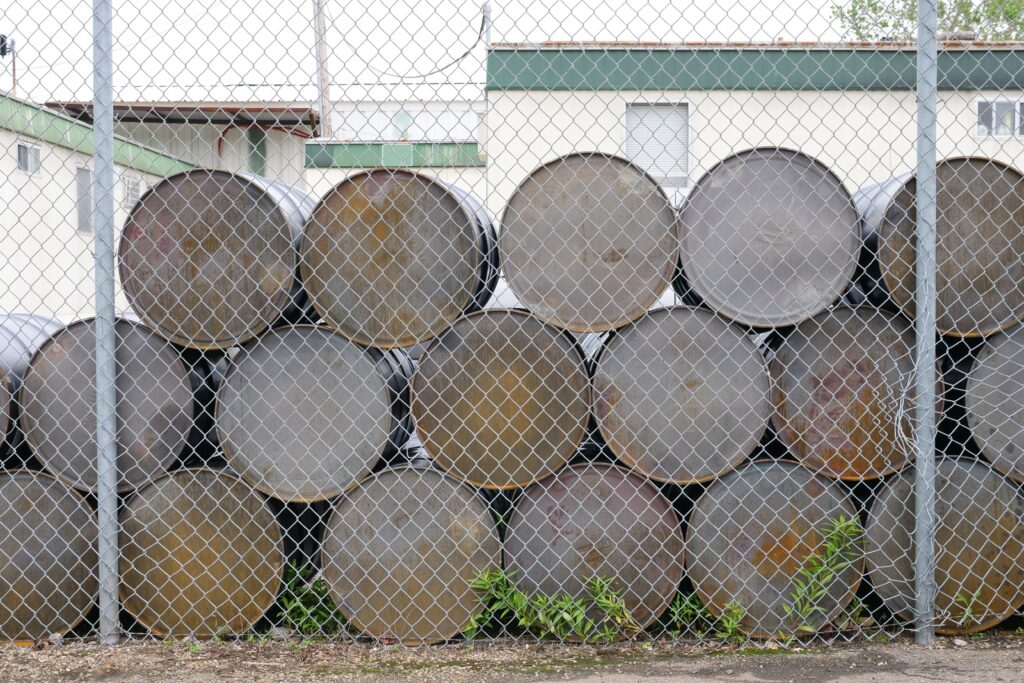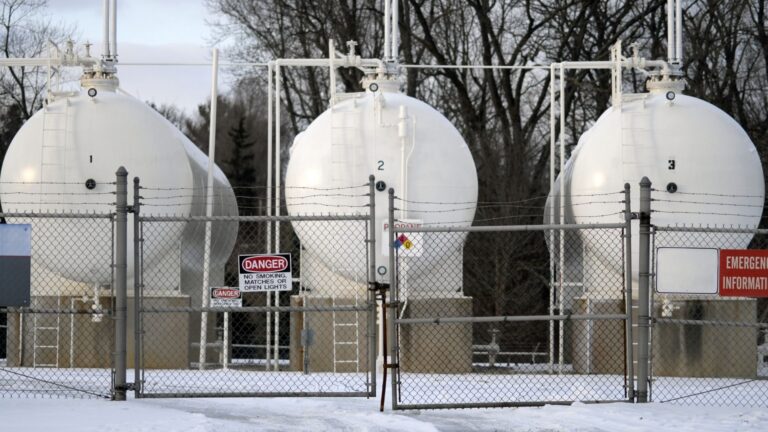Disposing of 55-gallon drums is a process that demands strict compliance with safety and environmental standards.
Drums that previously held hazardous materials, oils, or other substances must be handled with care to avoid health risks, legal penalties, and environmental harm.
Proper disposal involves meeting DOT labeling requirements, ensuring the drums are “RCRA empty,” and choosing the right disposal or recycling method.
This guide covers essential steps on how to dispose of 55 gallon drums, including assessing their condition, emptying them correctly, and exploring recycling or disposal options.
DOT Requirements for Hazardous Waste Removal
Transporting hazardous waste offsite is a complex task, subject to strict regulations.
While the EPA and DOT do not provide a specific format for labeling hazardous waste containers, both agencies mandate certain key information to be prominently displayed.
When it comes to DOT regulations, containers must be clearly labeled as hazardous materials and include the following notice:
HAZARDOUS WASTE—Federal Law Prohibits Improper Disposal. If found, contact the nearest police or public safety authority, or the U.S. Environmental Protection Agency.
In addition, the container must display your company’s name. Labels must be durable, easily visible, and written in English. They should be placed against a contrasting background and must not be obscured by any other labels, attachments, or advertising.
The label should always be diamond-shaped, with dimensions conforming to international standards—each side measuring 4″ x 4″, in a square-on-point format.
RCRA Standards for Hazardous Waste Drum Disposal
Once emptied and cleaned to RCRA standards (known as “RCRA empty”), hazardous waste drums can be disposed of like non-hazardous ones, saving costs.
However, what looks empty to you might not meet EPA standards. Mishandling these drums could still put you in violation of hazardous waste regulations.
The EPA outlines three “emptiness” standards for RCRA compliance:
- Hazardous Waste
- Acute Hazardous Waste
- Compressed Gas Hazardous Waste
1. Hazardous Waste
A drum is RCRA empty when no more than one inch of residue remains after draining or suction.
For drums under 119 gallons, if over 3% of the waste by weight remains, it’s still regulated. For larger drums, the limit is 0.3%.
2. Acute Hazardous Waste
Acute hazardous waste requires more stringent cleaning—there must be no residue.
Drums must be triple-rinsed or cleaned to equivalent standards, though federal guidance on what constitutes a triple-rinse is vague. Always check state rules or consult an expert.
3. Compressed Gas Hazardous Waste
A compressed gas container is RCRA empty when its internal pressure equals atmospheric pressure, but always follow specific safety rules for the specific pressures and drums involved.
How to Dispose of 55 Gallon Drums?

There are 5 steps for disposing of the 55-gallon drums. It’s necessary to follow specific guidelines to ensure environmental safety and compliance with legal regulations.
Here’s a step-by-step guide on how to dispose of 55 gallon drums:
- Determine the Drum’s Condition
The first step is to determine the drum’s condition.
Drums typically fall into three categories:
- Reusable: Drums that are in good condition (intact, no severe dents or rust, and can be rinsed) and previously contained less harmful substances like oils or soaps.
- Non-reusable: Drums that held difficult-to-clean materials (e.g., paints, resins, glues).
- Crushers: Drums that are severely damaged or compromised.
- Empty the Drum Properly
Ensure the drum is empty according to federal guidelines, such as CFR 49, which dictates how “empty” is defined. Even residual waste can still pose hazards, so handling it with care is essential.
- Consider Drum Recycling or Disposal
Decide if you would want to recycle or dispose of your drum.
- Recycling: If a drum is reusable, it can be cleaned, reconditioned, and repurposed. Recycling facilities can handle this process.
- Disposal: For non-reusable drums, specialized disposal services will wash, de-identify, and scrap the drum to ensure it doesn’t harm the environment. Drums that are badly damaged (crushers) should also be disposed of safely.
- Label the Drums
If there is any hazardous material residue, ensure the drums are properly labeled to indicate the type of waste they contain before recycling or disposal.
- Use Professional Transport Services
If you are transporting the drums to a recycling or disposal facility, comply with hazardous material transportation laws, including proper labeling, secure packaging, and appropriate vehicles.
It’s often easier to hire a company specializing in hazardous waste transport.
- Penalties for Improper Disposal
Failing to properly dispose of drums can result in substantial fines and legal consequences, as improper disposal poses risks to both human health and the environment.
Get Rid of Your Drums Safely with Safety Storage CTI
When it comes to the safe disposal of hazardous waste, the right equipment can make all the difference.
Safety Storage’s CTI compactors and crushers make drum disposal simple, safe, and cost-effective. CTI compactors are designed to handle waste materials with the highest level of efficiency, including hazardous, low-level radioactive, and saturated waste.
Reduce the amount of barrels required by compacting waste to a small portion of its original size, therefore lowering your landfill liability and environmental impact.
With Safety Storage CTI, you gain the benefit of significant cost savings. Businesses that have adopted CTI’s solutions have reported up to a 70% reduction in disposal costs.
Don’t let your waste management become a financial burden—CTI compactors are the smart, reliable solution to help you get rid of your drums safely while driving down disposal costs.




